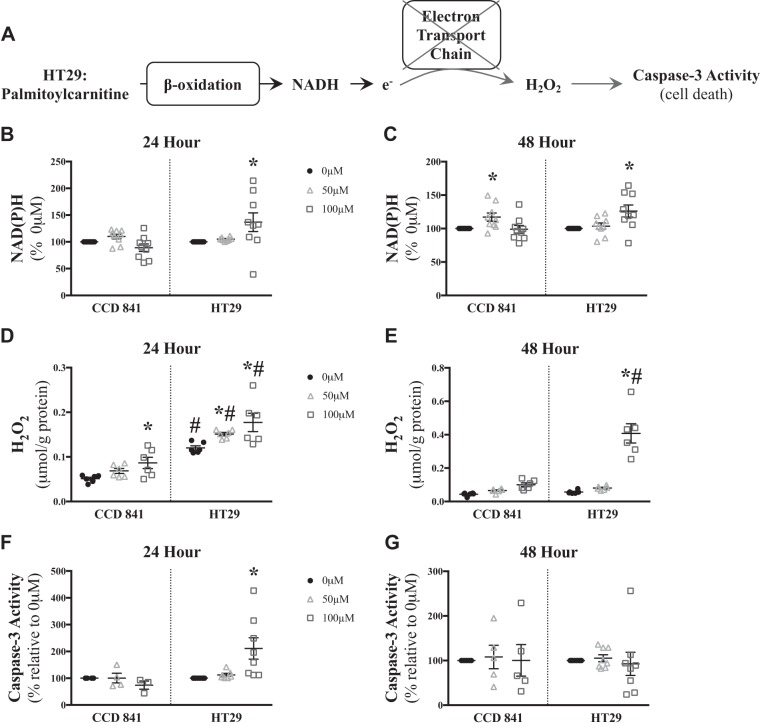Fig. 3.
Elevated NAD(P)H production leads to increased H2O2 emission and caspase-3 induction in low-oxidative-capacity HT29 cells but not high-oxidative-capacity CCD 841 cells. A: proposed schematic of how palmitoylcarnitine may result in elevated caspase-3 activity through H2O2 generation in a state of low oxidative capacity. NAD(P)H levels were measured in CCD 841 (N = 9) and HT29 (N = 9) cells for 24 h (B) and 48 h (C). Total H2O2 emission was measured in CCD 841 (N = 6) and HT29 (N = 6) cells after 24 h (D) and 48 h (E). Caspase-3 activity was measured in CCD 841 (N = 4–5) and HT29 (N = 8) cells for 24 h (F) and 48 h (G). Data are reported as means ± SE. P < 0.05, significant difference relative to 0 µM palmitoylcarnitine of the same time point (*) and significant difference relative to CCD 841 of the same palmitoylcarnitine concentration (#).

